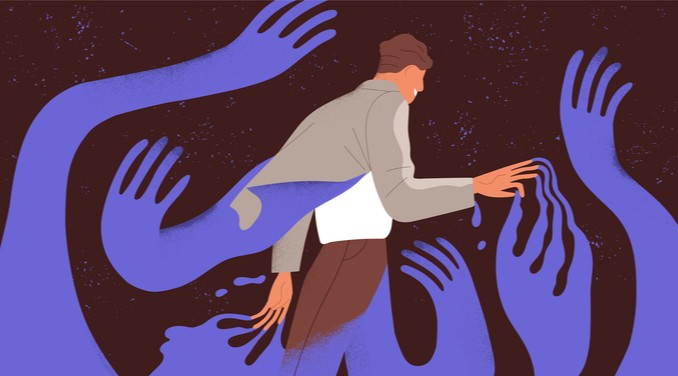The Evolution of Addiction and Recovery
Table of Contents
When we discuss leaving a substance use disorder behind, we must look at the stages of change in addiction. Addiction is a problem that affects many people across the country. Overcoming substance dependence is not an easy road, as many people who have gone through the process can testify. Leaving the disorder behind rests heavily on the decisions and motivations of the recoveree.
Over years, the medical profession has realized that constant and gradual change can be modeled. One of the most persuasive representations of change and the motivations that lead to it is the transtheoretical or “stages of change” model.
The Transtheoretical Model for Overcoming Addiction
The transtheoretical model of change was developed in the mid-80s to model the process of behavior change for addictive behaviors. The journal General Hospital Psychiatry notes that the transtheoretical model can be applied to a recovering individual’s journey. The Transtheoretical Model is also known as the stages of change model. The model can be used for several health treatments, among which is addiction recovery. At its heart, the model of stages of change in addiction seeks to explain overcoming substance dependence through motivation. This motivation comes from within (self-impetus) or from an external source (friends and family).
How Many Stages of Addiction Are There?
A modern examination of the stages of change describes either five or six different stages that are clearly defined to help recoverees visualize a path to overcoming their substance use disorder. Most modern scholars define the stages of change in addiction as:
- Pre-contemplation
- Contemplation
- Preparation
- Action
- Maintenance & Relapse
- Termination
The use of this model comes from the understanding that, for an individual to have lasting improvement for their disorder, something must change. Recovery comes from a person’s willingness to change and go against their most primal behavior. The model looks at humans as individuals that gradually learn to approach things differently. Change doesn’t happen in a single moment. Instead, change is a process that can take a long time to occur since it’s a gradual process.
Unfortunately, the adoption of the model has led to some clinicians and patients seeing these stages as boxes that need to be ticked to move an individual to the other stages of change in addiction. Instead of seeing them as rungs on a ladder, we should view them as advice on what motivates the person to change. Each of these stages of recovery is unique in how the recovering individual views them.
Pre-Contemplation
When someone is in pre-contemplation, they’re not concerned about seeking help for their disorder. In many cases, they don’t even see their addiction as a problem. Behaviors in this stage usually involve the person becoming defensive if rehab is mentioned.
Occasionally, the person may realize that they suffer from addiction but are okay with remaining in that state. They believe that they can control their addiction. This mindset is usually backed up by the lack of repercussions for their behavior. For loved ones who have someone in this stage, the aim is to get them to the next step.
Moving someone from pre-contemplation to the next phase of sobriety requires getting them to understand their focus of control. When someone sees what the consequences of their addiction are to those around them, it may push them to consider changing their behavior. It isn’t enough to help them understand the fallout from their behavior.
While the shame and guilt might affect them, it’s essential to provide them with alternatives to consider as well. At this stage, redirecting the person’s thinking and helping them grasp how fundamentally the substance affects their lives and interactions is vital to getting them motivated to change.
Contemplation
At this stage, the person becomes acutely aware of their condition and how it impacts those around them, both friends and family. Discussion is one of the best ways to engage a close friend or family member in this stage. Since they’ve come to accept their behavior, they’re more open to finding solutions to the problem. Discussing the matter doesn’t necessarily give them the impetus to change, however.
Likely, the person will just decide that it’s not worth changing at this stage. They might not immediately want to start rehab, but contemplation means that it may be a possibility sometime in the future.
At this point in the stages of change in addiction, the aim is to help the person come to terms with their current behavior and make preliminary decisions. However, it’s always a fight against the consequences of substance use. It’s common at this stage for the person to defer recovery to a later date, usually unspecified. They are considering recovering, but at this point, they’re happy with where they are. They rationalize their use as something that should happen, given their consequences, and may even sound quite convincing.
Preparation
Preparation is the commitment to take action and bring about real change in their lives. In some cases, a person may simply step over preparation and move immediately towards taking action. However, this has the problem of leaving the person unprepared to deal with the rehab process and possibly turning their back on it before it finishes. Preparation usually commences when the person realizes that their current behavior’s consequences far outweigh the personal discomfort they would have from trying rehab. They start understanding that making choices on their own merit is better for them in the long run.
Usually, this admission and the impetus to get help lead to them reaching out to friends and family members. They realize that it might not be the best idea to do this independently and start looking for a support group to help them.
Preparation also leads to the person finding new information about their disorder and formulating a plan for helping them get back on their feet. Friends or relatives that the person invites to help them can guide their plan. Setting realistic timelines and achievable goals are crucial to the success of the project. Once they start achieving their goals, they’re motivated to keep going.
Action
At the action stage, the person starts undergoing treatment. For some people, this may begin with detox and staying at inpatient facilities for a short time. With time they start going to therapy to help them deal with the trigger actions that may lead to relapses. While getting sober is one of the significant steps from this stage, it’s not the only one. Another result of this stage is a distinct change in their attitude and behavior. Fundamental lifestyle changes may affect their social interaction. At this stage, they start addressing the behaviors and motivations that led them to use the substance in the first place.
There’s no stipulated time for this portion of the recovery process to happen. Getting someone to replace old habits with new, healthier ones will take time. With the proper guidance and leadership, they can bolster their recovery. New practices help keep them focused and replace self-destructive behavior, leading to relapse in the next phase. The education within this stage includes more than just coping skills for behaviors, but also dietary and fitness regimens that benefit them.
Maintenance & Recovery
Some descriptions of his model also term this phase relapse since it’s most likely to happen at this point. At this point, the person starts to adapt to a substance-free lifestyle. They start having healthy, regular hobbies, and these overshadow their old habits. This stage relies heavily on community support since those individuals help them remember their progress and how far they’ve come. Unfortunately, most people don’t see how vital this stage is. Many people or their loved ones don’t take the maintenance phase seriously, leaving the person vulnerable to relapse.
Termination
The last phase that people go through when they go through the recovery process is termination. At the termination stage, a person is more or less finished with getting over substance use disorder. Remaining sober throughout the rest of your life requires constant vigilance. If the recoveree has changed their habits and learned to avoid their triggers, staying sober is just a matter of remembering those things. One of the most noticeable signs of being at this stage is how little the person feels to return to actively using the substance. The steps leading up to this point help them to deal with the problem by facing it head-on. These stages give the recoveree the tools they need to stop being afraid of the substance that controlled their life for so long. It gives them back control of their own lives and destinies.
A Gradual Process
Popular culture sometimes makes it seem as though addiction recovery can occur over a short period. This misconception leaves many people unsure of how long the recovery process can take. Shortcuts to healing don’t work so well, and it usually requires the dedication of the recovering person and their support network to bring about real change.
The model helps guide someone towards motivating themselves or their close relation to seeking help and eventually overcoming their dependence. The recovery representatives at Find Addiction Rehabs can help get you a program to help you leave that part of your life behind. Contact us today to find out more!
Deborah Tayloe is a freelance writer specializing in health and sciences. Deborah earned a B.S.Ed. in Secondary Education/English, accompanied by a Spanish minor. Her writing expertise allows her to craft engaging, impactful articles to help people be well.
In addition, she holds a fully accredited Certificate of Natural Medicine and is a certified Herbalist. Through her understanding of complementary medicine, Deborah helps medical professionals give people the information they need to embrace natural approaches to wellness.
When she’s not working, Deborah trains for 5K races and advocates for animal rights.




